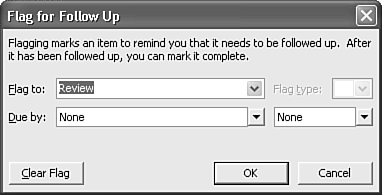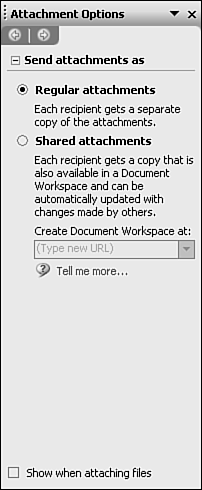Streamlining the Review Process with Microsoft Outlook
From within Word, you can forward a document for review?and if your colleague is using Word and Outlook, he or she can review it immediately on opening it.
To send a document for review, choose File, Send to, Mail Recipient (for Review). Word displays an Outlook message window, as shown in Figure 26.27; the attachment is listed in the Attach line. You can add the email addresses of your reviewer or reviewers in the To and Cc lines.
Figure 26.27. Word can include a copy of your document in an Outlook email message.

A follow-up message flag is automatically included with the message, indicating that the item needs to be reviewed, but specifying no due date or time. To set the due time or date, click the Message Flag button. The Flag for Follow Up dialog box appears (see Figure 26.28). Set a new date and time for follow-up in the Due By drop-down boxes, and click OK.
Figure 26.28. Controlling how Outlook flags a reviewed item for follow-up.

By default, Word sends a separate copy of your attachment to every email recipient. However, if you are using SharePoint Team Services or Microsoft SharePoint Portal Server with Word 2003, you also have the option of automatically creating a shared Document Workspace where you and your colleagues can work on a shared copy. To create a shared attachment, click Attachment Options. The Attachment Options task pane appears (see Figure 26.29).
Figure 26.29. The Attachment Options task pane.

Click Shared Attachments. Next, type a URL corresponding to the location where you want the Document Workspace to be created.
When you're ready to send the message, click Send (refer to Figure 26.27).
When a recipient receives the message, he or she can double-click on the file attachment icon to open the file in Word, with the Reviewing toolbar already displayed. When reviewers return files to you, those files automatically prompt you to merge changes using the tools on the reviewing toolbar.
For files that have been sent for review, a new button appears on the Reviewing toolbar: End Review (see Figure 26.30). When you've finished merging changes from reviewers, click End Review to end the review cycle. After you've done this, Word will no longer prompt you to merge changes from reviewers.
Figure 26.30. You can click End Review to end a reviewing cycle.








